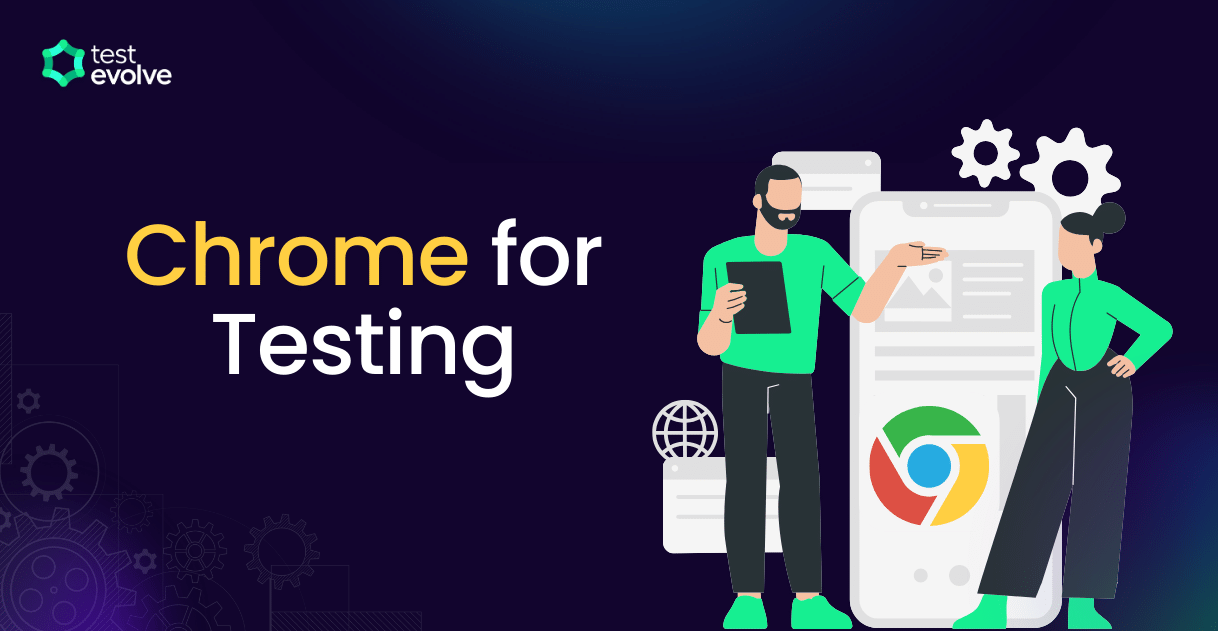Introducing the new Google ‘Chrome for Testing’
Cross browser testing, whether undertaken manually or via automation, is always important for assessing a quality web app user experience.
To enable more controlled and repeatable Chrome testing by testers and developers, Google has released ‘Chrome for Testing’ and we have now enabled this within Test Evolve Spark for Ruby and JavaScript.
The Chrome for Testing browser offers as near a production-like Chrome browser experience as possible but is tailored specifically for testing and not for use by everyday consumers.
Challenges when testing with production release browsers
Testing with latest production browsers is great when you wish to assess your web application experience in the same way as the majority of your users will do, but it also presents a few unique development and testing specific difficulties that are very unlikely to impact the general public.
Auto Update - Happy Users vs Frustrated Developers
For most Chrome users, their browser will be automatically updated to provide them with an up-to-date and secure browser that includes the latest browser features and necessary bug fixes.
When testing version specific features, recreating user reported bugs or just regression testing in general, Developers and Testers are always seeking controlled environment conditions, which is not possible when the browser executable or binary updates itself between two test runs.
Versioned Browser Binaries
While browser auto updates benefit the typical user, they pose difficulties for Developers and Testers who require an older version of Chrome to replicate a bug report for example. Locating a specific version of the production Chrome binary from Google is often hard to do. Google intentionally makes this difficult in order to ‘encourage’ people to stick to the latest.
Procuring a versioned Chrome binary is not the only requirement. A corresponding ChromeDriver binary of the same version must also be obtained to ensure compatibility between the two binaries. It’s not difficult to see why this quickly becomes a logistical headache with multiple versions needing to be tested against.
As a result, many Developers and Testers have resorted to downloading Chromium binaries instead of Chrome to support their testing. Whilst this facilitates an easier route to grabbing a specific version, it’s important to understand that Chromium is not the same browser your customers are using with your web application. The Chromium versioning and publication pipeline is also completely detached from the production Chrome pipeline. Chromium is also not available on every operating system. So this approach adds some testing flexibility but not without some risk
Why ‘Chrome for Testing’?
Google has introduced ‘Chrome for Testing’ to eradicate all of the above challenges.
It is as close to a production version of Chrome as you will find
The versioning and publication is completely coupled to the production Chrome pipeline
You can quickly locate and work with any particular version you require
The associated Chromedriver management is also handled for you and no longer a separate process
You are no longer subject to an auto updating binary
It’s available on all major operating systems and with all browser channels: Stable, Beta, Dev and Canary
Finally, you have a controlled and easily manageable Chrome testing ecosystem. This is great news!
Chrome for Testing with Test Evolve Spark
Chrome for Testing has now been incorporated into Test Evolve Spark for both Ruby and JavaScript automation projects. All you need to do is enable it within your browser configuration.
Webinar: An introduction to the new Chrome for Testing
Google has released Chrome for Testing - a new browser not for consumers, but for Developers and Testers. Exploring the Whats and Whys...
Webinar Agenda -
What is it?
Why do we need it?
Pros and Cons?
Chrome for Testing in use with Selenium Manager
In this short webinar, we'll give you all the info you need to understand how and why this has come about.
What problems were Google trying to solve? Is this better than 'consumer" browser versions? What does it add to my local testing?
Everything you need to make an informed decision about your manual and automated testing browser choice.



